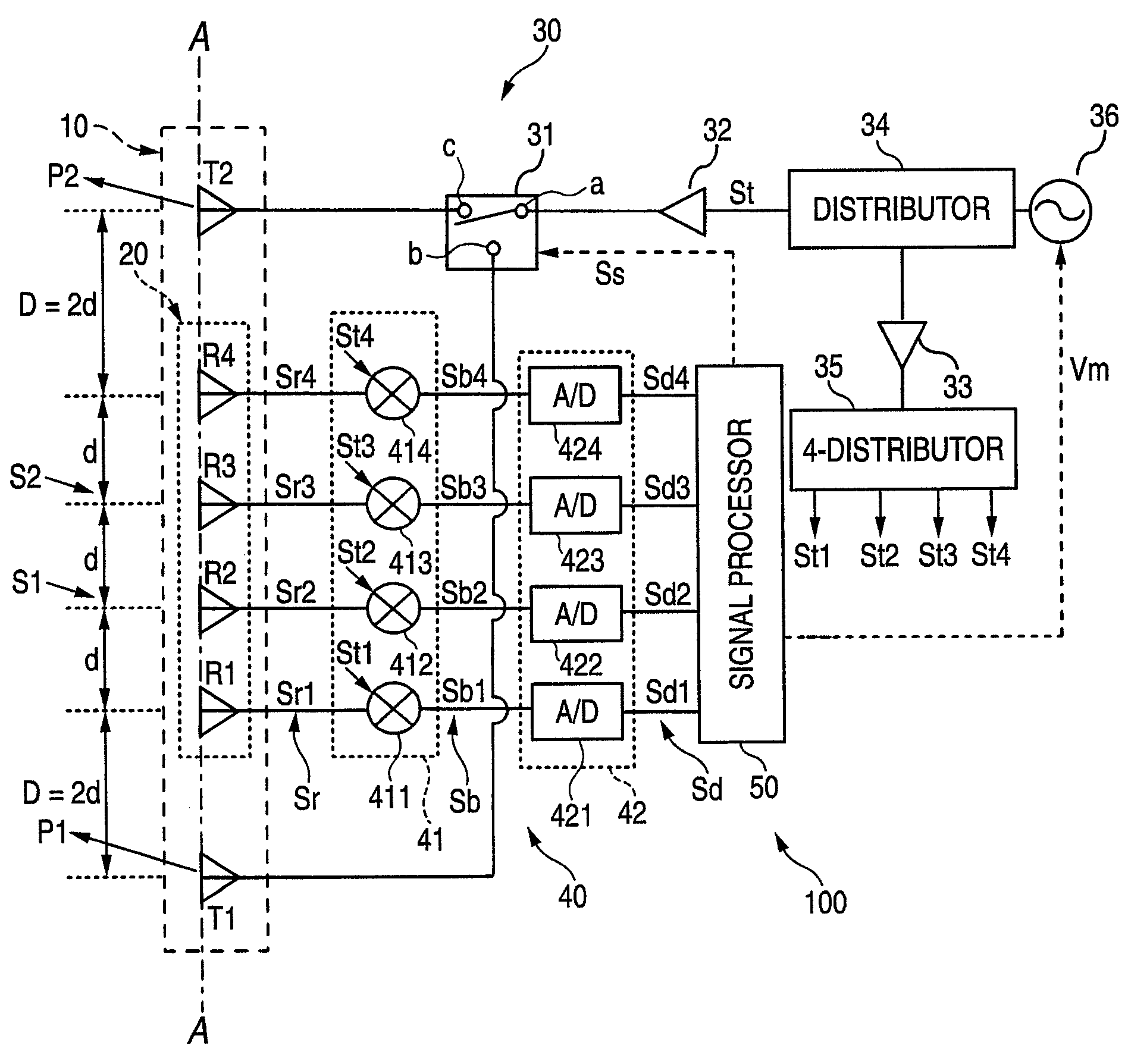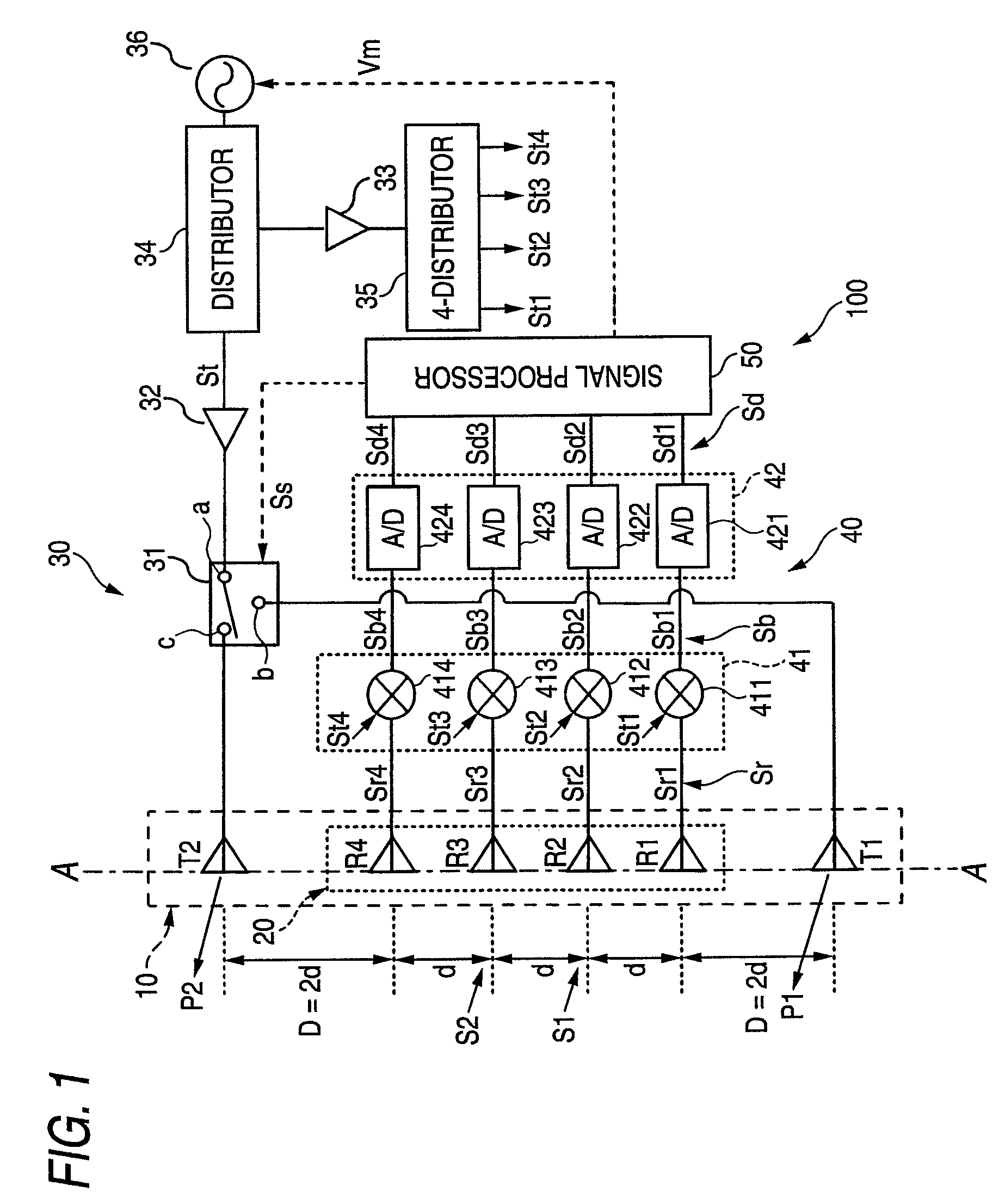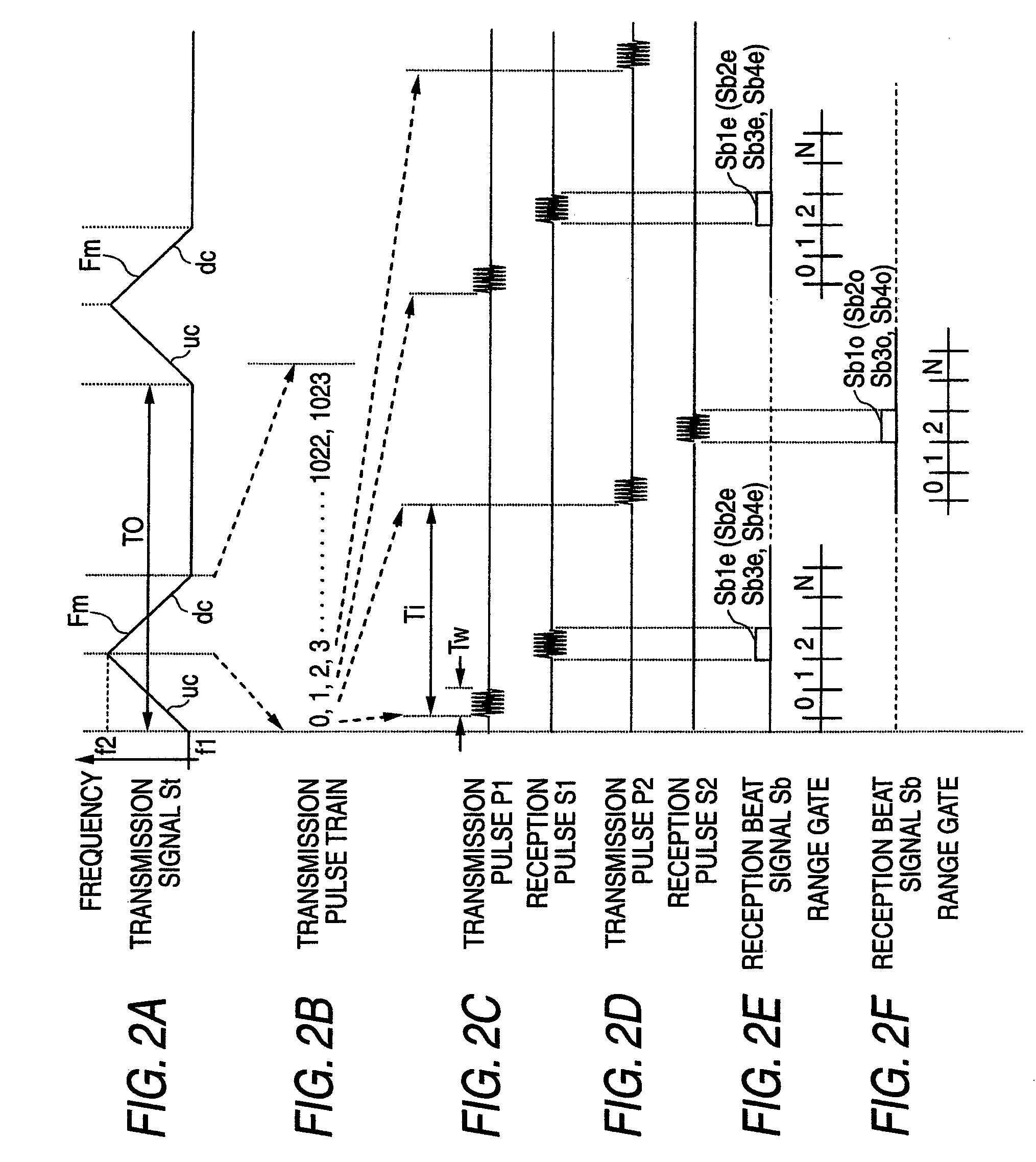In-vehicle mount radar device
a radar device and vehicle-mounted technology, applied in the direction of antenna details, instruments, antennas, etc., can solve the problems of limited space, affecting the reception intensity of beat signals, and limited angle resolution, so as to enhance angle resolution and enhance angle information calculation precision
- Summary
- Abstract
- Description
- Claims
- Application Information
AI Technical Summary
Benefits of technology
Problems solved by technology
Method used
Image
Examples
first embodiment
(5) Effect of First Embodiment
[0086]In the first embodiment, the angle information Iθ concerning the target is calculated by averaging the angle information Iθ1 to Iθ4 calculated from each reception channel pair. The resolution Δθ of the angle information Iθ1 to Iθ4 is defined as Δθ=(λ / L). In the first embodiment, the interval D between the transmission antennas T1, T2 and the reception antenna array 20 is set to D=2d with respect to the interval d of the reception antennas R1 to R4. As a result, the antenna aperture diameter L is increased and L is equal to 7d. Accordingly, the resolution Δθ can be enhanced to a smaller value, and thus more accurate angle information Iθ can be achieved.
[0087]Next, an effective angle measuring range Rθ of the in-vehicle mount radar device 100 will be described. The effective angle measuring range Rθ is an angle range in which the in-vehicle mount radar device 100 can accurately measure the angle information Iθ concerning the target on the basis of t...
second embodiment
[0091]In a second embodiment, the coefficient m is set to 2.5, and in connection with this setting, the positioning coefficient P is set to P=+16. The other constructions are the same as the first embodiment.
[0092]FIGS. 7A-7E show the route difference of the respective antennas and the equivalent arrangement of the antennas in the second embodiment. FIGS. 7A-7E correspond to FIGS. 3A-3E. However, in the second embodiment, the coefficient m is set to 2.5, and thus the typical route difference is different, and the interval of the virtual transmission antenna T1 / T2 in the equivalent arrangement of the antennas is different. The other conditions are the same as FIGS. 3A-3E.
[0093]In the second embodiment, the coefficient m is set to 2.5, and the interval D is set to 2.5d. Therefore, the reception antennas R1 to R4 are arranged along the arrangement line A-A of the antennas so as to be spaced from the transmission antenna T2 at intervals of 5.5d, 4.5d, 3.5d, 2.5d, respectively. According...
third embodiment
[0106]In the second embodiment, the coefficient m is set to 2.5. However, in a third embodiment, the coefficient m is set to 2.7, and in connection with this setting, the positioning coefficient P is set to 16.8. The other conditions are the same as the first embodiment.
[0107]In the third embodiment, as in the case of the first embodiment, the signal processor 50 is configured to executed the DFT processing on the reception data Sd in step S13 of FIG. 4. It may be considered that FFT processing is executed in place of DFT processing in step S13. However, in the FFT processing, it would be impossible to process the reception data in the channel direction of the space in step S4 unless the coefficient m is equal to an integral multiple of ½. In the third embodiment, the coefficient m is equal to 2.7 and thus this value is not an integral multiple of ½. However, by executing the DFT processing on the reception data in step S13 in the signal processor 50, it would be possible to process...
PUM
 Login to View More
Login to View More Abstract
Description
Claims
Application Information
 Login to View More
Login to View More - R&D
- Intellectual Property
- Life Sciences
- Materials
- Tech Scout
- Unparalleled Data Quality
- Higher Quality Content
- 60% Fewer Hallucinations
Browse by: Latest US Patents, China's latest patents, Technical Efficacy Thesaurus, Application Domain, Technology Topic, Popular Technical Reports.
© 2025 PatSnap. All rights reserved.Legal|Privacy policy|Modern Slavery Act Transparency Statement|Sitemap|About US| Contact US: help@patsnap.com



